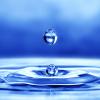I have heard that Type 1 And 3 collagen are found in the skin, and TYpe 2 and some others are found in the joints and connective tissues. I have seen it said that applying collagen to the skin has no effect, but what about taking it orally?
There are pills that have like 500mg oc collagen, but then there are powders that have like 10g.
Here is a site talking about gelatin (collagen) also being responsible for weight loss and growth hormone release, although I have no idea if this is legit, or who this woman is.
Have there been any studies about Types 1 and 3 collagen supplementation improving he production of collagen in the skin which would lessen the appareance of wrinles?













































